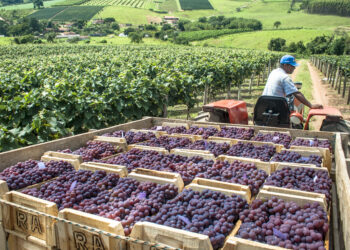YES! I finally made it to the Philippines this year. The capital is one of the wildest destinations in Southeast Asia. That can only mean a lot of peculiar street foods wherever one ventures. Adding in the horrible traffic that makes it challenging to navigate through at times, one really has more reasons to be lost in the city and eat more food. Discover my culinary adventure in vibrant Manila as some rocked my taste buds, but some not so much. Have fun reading it, and I sincerely hope you will have the time of your life in Manila. If you are not a food-lover like me but more into breath-taking beaches, you should opt for Palawan.
1. Balut
Balut, also known as balot, is a delicacy of duck-fetus or chicken-fetus boiled and eaten in the Philippines, Laos, Cambodia, and Vietnam. My first experience of balut was not here in Manila but in Hanoi in 2011. You eat balut by gently peeling the eggshell off with fingers. First, you suck the juice out and enjoy all the richness in its essence, then season with a pinch of salt and ground pepper as you continue to peel the whole shell off.
Affiliate Disclaimer: Our blog posts may contain affiliate links. If you make a purchase through these links, we receive a modest commission at no extra cost to you. These commissions help us fund our team of travel writers, allowing us to continue providing you with the latest travel news, tips, and inspiration. Your support keeps this blog alive and thriving, and we appreciate it immensely. Thank you!

I gotta agree that balut might not be the most mouth-watering food around. If any, it probably sits at the bottom of the most hideous-looking food list in the entire universe. I think the picture below self-explains a lot. Having said that, oddly enough, I knew I was going to like balut after I had seen it on Survivor. So what are the odds, huh? (pun intended). If I were on the show, I would for sure win this challenge by a mile. Okay, you may relax your eyebrows now.
What surprises me the most is that not all Filipinos find balut that appealing. During my time in Manila, I popped the question to a few locals. Unfortunately, only one out of five people was willing to take me up on the challenge to eat balut, which kind of confused me because I thought Filipinos must have loved eating it. In addition, it is not as easy as I thought it would be to hunt for men who sell balut on the streets.
So what’s the eating experience like? Sure it smells a bit funny, and yes… I won’t argue that balut resembles one of the baby aliens from the Men in Black movie that suffers from severe chickenpox and is ready to explode any second. Still, the truth is… it tasted just fine, like a good mix of chicken meat and hard-boiled egg, really. Never let your adventurous appetite be overpowered by the soft bones, claws, beak and feathers that you might stumble into as you chew on balut, but rather think of it as a chicken and egg salad ala Filipino minus all the veggies. If someone pulls a prank on you, blindfolds your eyes and gives you balut to eat, there is a 30% chance you’re going to like it. It is a simple case of mind over matter.
2. Halo-halo
On a very hot day, while continuously hopping from one site to another, one could really use some refreshment like halo-halo. This desert thrives on its fantastic mix of milk, shaved ice, preserved fruits, nata de coco, young white coconuts, chickpeas, sweet potatoes, white beans, and kidney beans topped with a scoop of purple-coloured ice cream called ube made from yam. Sounds so very mamma-mia right? You can easily get your own halo-halo at every Chowking and Jollibee stall you see in The Philippines. Both Chowking and Jollibee are Filipino fast-food restaurant chains that have successfully crawled their ways to many countries.

Halo-halo was actually featured in one of the episodes of Anthony Bourdain: Parts Unknown, where he said he liked it even though the desert made no god damn sense at all (with all the colourful concoction in a tall glass). Nevertheless, he concurred that it was oddly beautiful.
3. Favourites at Tagaytay
Whisk yourself for a day trip to Tagaytay City early in the morning and stop at Taaleña for breakfast and take in all the picturesque view of the small volcano Mount Taal that is situated in the middle of a lake. Tagaytay City is 50 km south of Manila and promises a cool breezy highland climate that you can’t get while in Manila. While at Taaleña, my food picks were Bangus sisig (milkfish marinated in lemon juice and vinegar before pan-fried for serving) and bangus sinigang (the tamarind-based fish soup was extremely sour and refreshing). I loved the latter. If you have the time and travel in a group of small to medium-sized, hop on a boat and cross the lake to Mount Taal just after breakfast. That way, you can all share the boat transfer (PHP 1,000) and make the best out of your time here.

Another ultimate food favourite from Tagaytay is definitely the buko tart (coconut tart). When you return to Manila late in the afternoon, make sure you drop by Rowena’s for their sumptuous buko tarts. You’ll know it’s Rowena’s because the whole shop is painted pink. Their tarts come in several choices – apple, mango, ube (yam), and pineapple. They also sell blueberry and strawberry cheesecake, among other delicious homemade snacks and tamarind preserves. Leaving Tagaytay without some cute-looking buko tarts would be a sin, buddy.
4. Chicken Adobo
In Filipino gatherings, chicken adobo will most likely make an appearance as it is their national dish. There are seafood, vegetable, pork versions of adobo as well. The Spaniards’ name “adobo” was given when they ruled The Philippines in the late 1600 and later discovered a cooking method similar to that of their home country. This cooking method involves stewing with vinegar, garlic and soya sauce. I had my yummo Gummo fragrant chicken adobo at Binalot, a quick-service eatery within the famous Intramuros complex. Ask for one plate of luke-warm jasmine rice and some bird-eye chilli and your savouring experience is complete, my friend. The sourness of chicken adobo will resurrect your taste buds like never before.

Afterwards, remember to stroll to San Agustin Church, Manila Cathedral and Fort Santiago within the Intramuros district. Intramuros is one of the most pivotal heritage sites in the country and highly recommended for sightseeing, especially when you’re in the mood for some old Spanish era nuance. So when you remember chicken adobo, remember Binalot and Intramuros. Easy right?
5. Seafood Dampa
I came to Seafood Dampa in Pasay City near Manila Bay with expectations as high as when I was standing in line for a ticket to see my favourite band perform in concert. Every major city in Asia has got to have their own unique seafood eateries, right? Well, Dampa is both a seafood paradise AND a well-designed tourist trap, if you ask me. Yes, you can taste fresh foods from the sea here in Dampa – lobsters, prawns, jacks, snappers, oysters, cockles, crabs, squids, whatever you desire. The only problem is… the stalls can’t prepare the foods for you to eat on the spot, my brother. They are just the pretty sellers.
The way things work is slightly different in Dampa. First, you purchase the seafood from the sellers. Then you take them to the next door restaurant (there are tons of restaurants for you to choose from), hand the seafood over to the waiter, and tell him how you want them cooked. The restaurant will charge PHP 250 – 500 for the cooking, depending on how they cook the seafood. I met up with my local Couchsurfing friend, Raymond, for dinner in Dampa, and we dined at Huey Ying. And guess what? Like helpless moths going into the light, we paid PHP 2,000 for two-person meals, equivalent to eight chicken adobo meals at Binalot. We didn’t really evaluate the bill when presented, which was clearly our mistake. Always double-check your bill when eating at Dampa! The entire experience was an epic fail. Nevertheless, I loved Huey Ying’s appetizer – pokpoklo (seaweed with tomato slices dipped in vinegar sauce).
6. Salcedo Market
Salcedo Market is a nice little park/market right in the middle of Makati City, which I’d visit repeatedly. Skyscrapers, tall buildings and trees shield this beautiful park and the passersby from the scorching hot sun. Salcedo is mingling with different people from different nationalities who share the same passion for eating organic foods. This market features at least 50 stalls – offering a great variety of earthy produce and homemade delights that scream healthy and fresh. Whatever you have on your groceries list, bring some handy paper bags with you before leaving home. Jams, chutneys, canned sardines, candies, and handsome loaves of bread will make you shop till you drop. Salcedo market, unfortunately, is only open on Saturday and Sunday.

It’d be a complete lie if I said all the products are the healthiest in the country as Salcedo also brings the visitors local cuisines such as lechón kawali (deep-fried pork belly, very famous from Cebu), tuna kilawin (raw tuna marinated in vinegar and onions), and international cuisines like Gado-Gado from Indonesia, pad sieu from Thailand, an oyster omelette from Taiwan and many more. Try as you might, but there will never be enough time to savour all the dishes. Therefore you gotta come here with a bunch of friends who are willing to share plates of different gourmets with you and everybody. I don’t mean to sound cliché, but Salcedo is just lovely in every single way. I loved the positive and natural vibe about the crowd and their enthusiasm. I was genuinely feeling and caressing every bit of the morningness of it.











